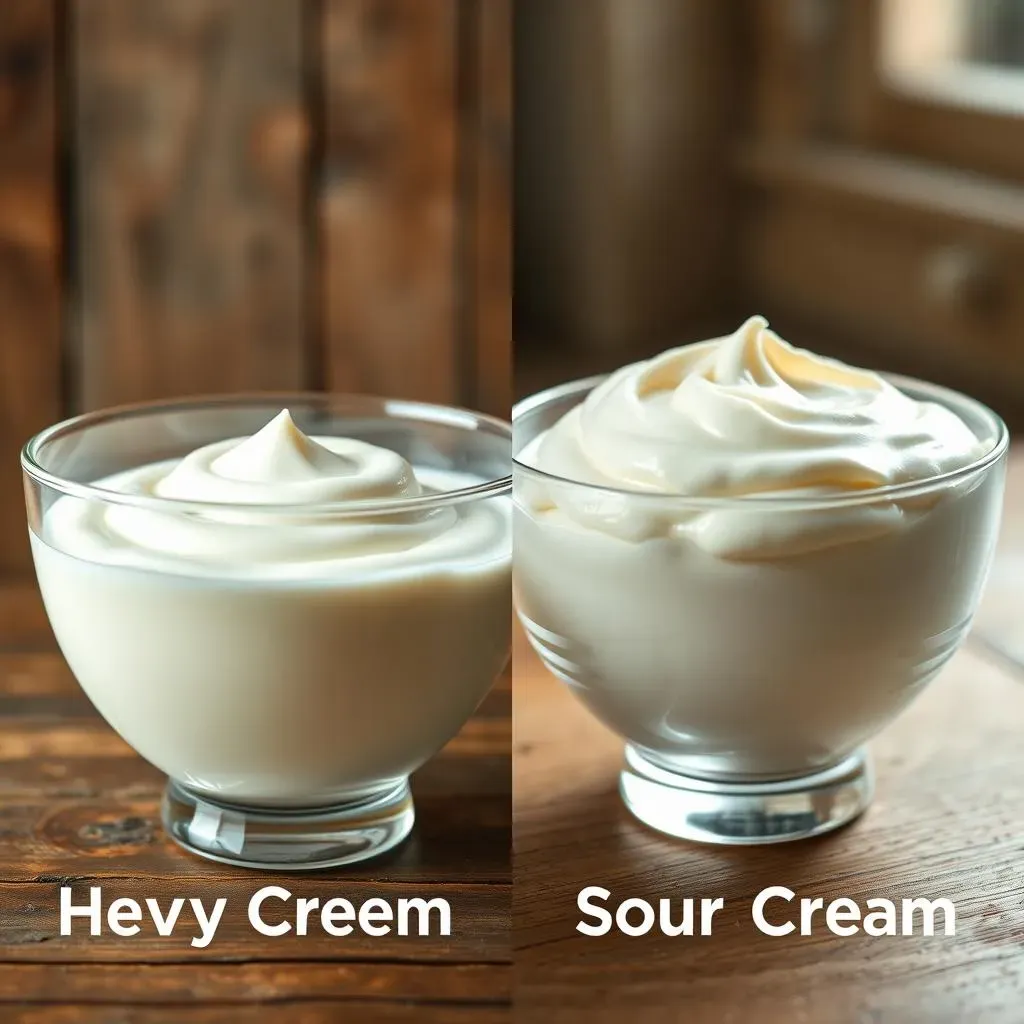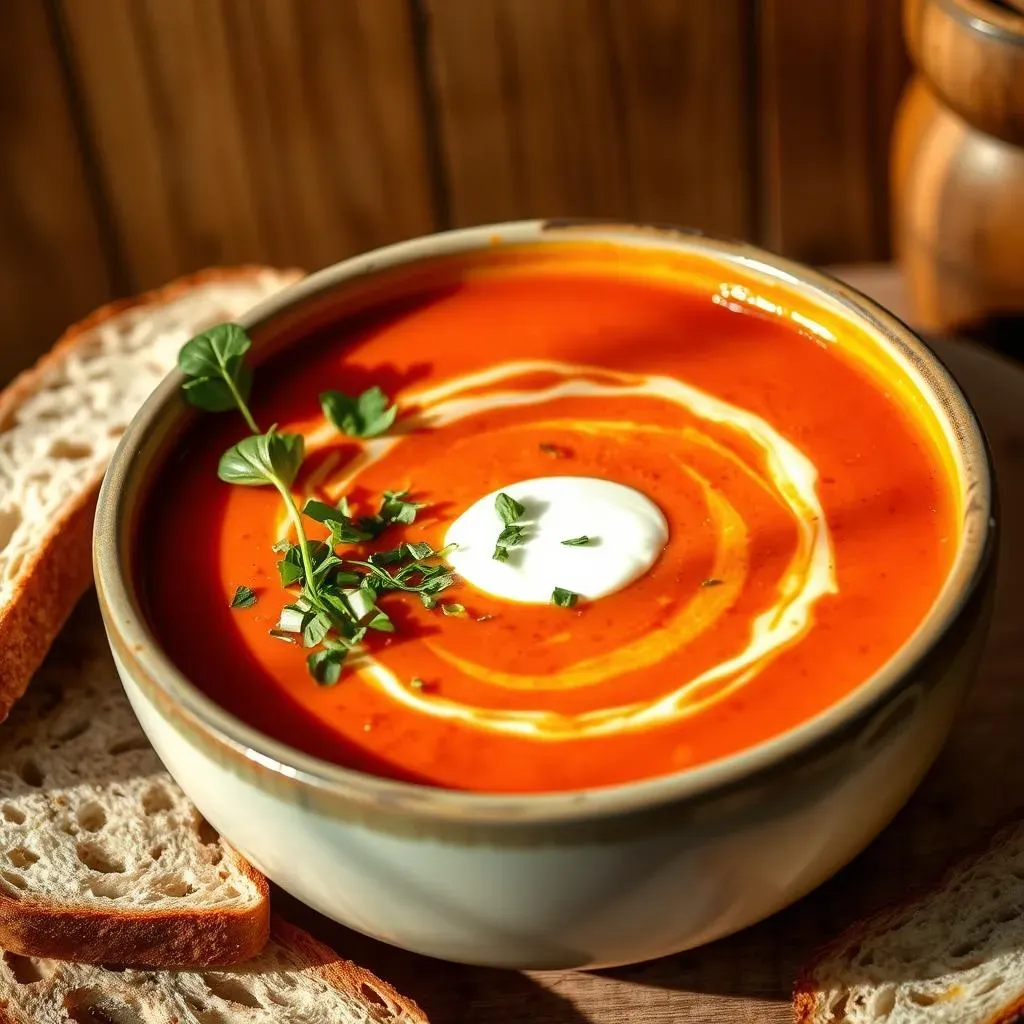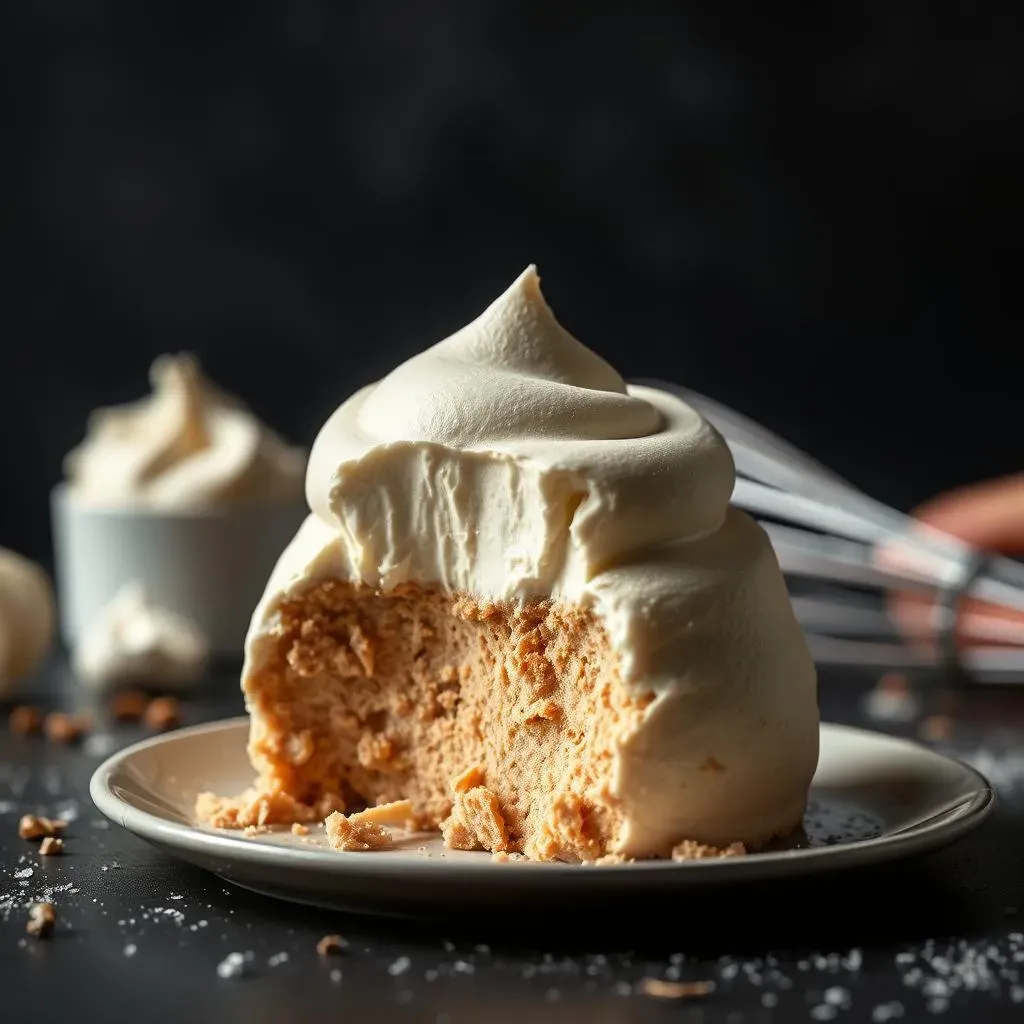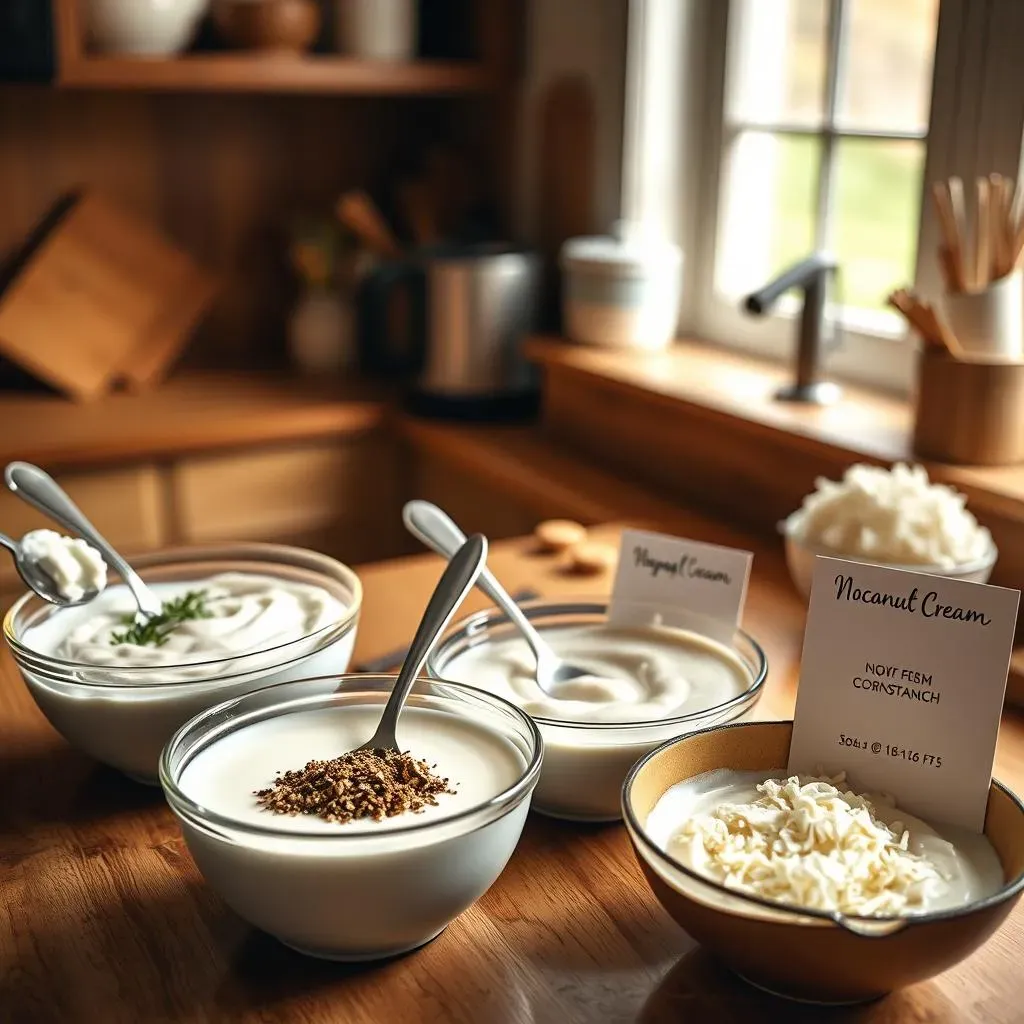Table of Contents
Ever stared blankly at a recipe, realizing you're missing a key ingredient – heavy cream? Don't panic! We're diving into the creamy world of substitutions, specifically addressing the burning question: can sour cream substitute for heavy cream? This comprehensive guide explores the similarities and crucial differences between these two dairy delights. We'll uncover when sour cream shines as a savvy swap in savory dishes, and equally importantly, when it falls short in baking and desserts. We'll explore the science behind why it works sometimes and fails other times, helping you make informed decisions in your kitchen. Prepare to become a substitution superstar! By the end, you'll confidently navigate recipes, knowing precisely when you can use sour cream as a substitute for heavy cream and, equally importantly, when to seek out alternative options. Let's get started!
Understanding Sour Cream and Heavy Cream: Key Differences

Understanding Sour Cream and Heavy Cream: Key Differences
So, you're tackling the great sour cream vs. heavy cream debate? Let's break it down. Both are dairy products, but their differences are significant. Heavy cream is, well, heavy! It boasts a high fat content (around 36%), giving it that rich, luscious texture perfect for whipping into fluffy clouds or adding decadent richness to sauces. Think of it as the heavyweight champion of creaminess. Sour cream, on the other hand, is a bit of a lightweight, typically containing around 20% fat. It's tangy and creamy, but its lower fat content means it won't whip the same way. Think of it as the versatile middleweight, great for adding a creamy tang to dips and toppings. Understanding this fat difference is key to understanding when substitution might work – or spectacularly backfire. For instance, if you're making whipped cream, you definitely need that high fat percentage of heavy cream. A cheesecake recipe, on the other hand, might tolerate the tang of sour cream better.
Feature | Heavy Cream | Sour Cream |
|---|---|---|
Fat Content | ~36% | ~20% |
Texture | Thick, luscious | Creamy, tangy |
Whipping Ability | Excellent | Poor |
Flavor | Rich, buttery | Tangy, slightly acidic |
Knowing the characteristics of each is half the battle. The next step is understanding how these differences affect various recipes. Let's explore situations where you can successfully swap sour cream for heavy cream, and those where you definitely shouldn't. For example, if you're making a creamy soup, you might find that sour cream adds a pleasant tang. But if you're baking a cake that needs whipped cream, well, that's a different story entirely! Check out this post on substituting sour cream for cream for more tips.
- High Fat Content: Heavy cream has a significantly higher fat content than sour cream.
- Texture and Consistency: Heavy cream is thicker and richer than sour cream.
- Flavor Profile: Sour cream has a distinct tangy flavor, unlike heavy cream's neutral taste.
When Sour Cream Works as a Heavy Cream Substitute: Savory Dishes

When Sour Cream Works as a Heavy Cream Substitute: Savory Dishes
Soups and Stews: A Creamy, Tangy Twist
In the world of soups and stews, sour cream often acts as a fantastic substitute for heavy cream. Its lower fat content might seem like a drawback, but in these hearty dishes, the tangy flavor profile actually adds a delightful complexity. The creaminess is still present, lending a velvety texture without overwhelming the other flavors. Think of a creamy tomato soup – the slight acidity of sour cream cuts through the richness of the tomatoes, creating a more balanced and interesting taste. Remember to stir it in at the end to prevent curdling, though! Adding it at the end keeps the cream from breaking down and also retains its lovely texture. Need more tips on using sour cream for cream in similar dishes? Check out our other posts.
For instance, a classic potato soup can be elevated with a swirl of sour cream. The tanginess contrasts beautifully with the earthy potatoes, adding another layer of flavor that heavy cream simply can't match. It's a subtle but significant difference that seasoned cooks appreciate. But remember, you always want to add it at the end of the cooking process to prevent curdling.
- Adds a tangy complexity
- Creates a velvety texture
- Stir in at the end to avoid curdling
Sauces and Dips: A Tangy Upgrade
Sour cream's tangy nature makes it a surprisingly good choice for certain sauces and dips. While it might not provide the same level of richness as heavy cream, it often adds a welcome brightness and depth of flavor. Think of a creamy cilantro-lime sauce for tacos or a creamy dill dip for vegetables. The tanginess complements the other ingredients beautifully, creating a more complex and exciting flavor profile. This is especially true for dishes where you want a bit of an acidic bite to cut through the richness of other ingredients. For example, a creamy mushroom sauce paired with a rich steak can be enhanced by the tanginess of sour cream.
However, remember that sour cream's lower fat content means it won't create the same thick, luxurious texture as heavy cream. If you need a very thick sauce or dip, you might need to add a thickening agent such as cornstarch or flour. Remember, always add it at the end of cooking to prevent curdling. Looking for more ideas on using sour cream as a yogurt substitute? We have some great suggestions!
Dish | Sour Cream Benefit | Consideration |
|---|---|---|
Taco Sauce | Adds bright tang | May need thickening agent |
Vegetable Dip | Complements herbs | Lower fat content than heavy cream |
Mushroom Sauce | Balances richness | Add at end to avoid curdling |
Chili and Chilis: A Flavorful Addition
Chili and other chili-based dishes are another area where sour cream shines as a substitute for heavy cream. The lower fat content is less noticeable in these already rich and flavorful dishes. The tanginess adds a subtle complexity that enhances the overall flavor profile. It's a simple way to add creaminess without making the chili too heavy or rich. Consider adding sour cream as a topping rather than stirring it directly into the chili. This allows you to control the amount of sour cream added to each serving and prevents the chili from becoming too thin. You can try adding a dollop of sour cream to a bowl of chili, and then stir it in to see what you think.
Moreover, the slight acidity of sour cream can help to balance out the spiciness of chili. This is especially useful if you're making a particularly spicy chili, as the sour cream can provide a cooling counterpoint to the heat. Want to learn more about substituting sour cream for buttermilk? Check out our detailed guide.
“A little bit of sour cream goes a long way in chili. Its tangy flavor really brightens up the dish.” - Anonymous Chili Enthusiast
When Sour Cream Fails as a Heavy Cream Substitute: Baking and Desserts

When Sour Cream Fails as a Heavy Cream Substitute: Baking and Desserts
Cakes and Frostings: A Recipe for Disaster?
Now, let's talk about where sour cream absolutely *shouldn't* replace heavy cream: baking and desserts. In these delicate realms, the high fat content of heavy cream is crucial for achieving the right texture and structure. Heavy cream's ability to whip into fluffy peaks is essential for many cakes and frostings. Sour cream, with its lower fat content and tangy flavor, simply won't deliver the same results. Trying to substitute it in a recipe calling for whipped cream will likely result in a lumpy, soupy mess. The tangy flavor will also clash with the delicate sweetness of most desserts. Imagine trying to make a light and airy cheesecake with sour cream – it's a recipe for disaster!
Think of it like this: heavy cream is the elegant ballerina, light and airy, while sour cream is the enthusiastic but slightly clumsy tap dancer. They both have their place, but they're not interchangeable. If a recipe specifically calls for whipped cream, stick with heavy cream. You'll thank me later! Want to know more about using sour cream as a yogurt substitute? Check out our detailed guide.
- Heavy cream whips; sour cream doesn't.
- Sour cream's tang clashes with sweet desserts.
- Texture will be off in most baked goods.
Mousses and Soufflés: A Recipe for Collapse
Mousses and soufflés are notoriously finicky, relying on the delicate balance of air and structure provided by whipped heavy cream or egg whites. Sour cream's lower fat content and tangy flavor will disrupt this balance, leading to a collapsed and unappetizing final product. The tanginess will also clash with the delicate flavors of most mousses and soufflés. The high fat content of heavy cream is essential for stabilizing the air bubbles created during whipping, giving these airy desserts their characteristic lightness and texture. Sour cream simply lacks that essential structural integrity. It's a bit like trying to build a sandcastle with wet sand instead of dry sand - it's just not going to hold up.
Instead of sour cream, consider using alternatives like full-fat Greek yogurt (thinned with a little milk if needed) or even a vegan whipped cream for a dairy-free option. These alternatives will provide a similar level of creaminess without the detrimental effects of sour cream's tang and low fat content. Need more information on how to substitute sour cream for buttermilk in baking? We've got you covered!
Dessert | Why Sour Cream Fails | Better Alternative |
|---|---|---|
Mousse | Low fat, tangy flavor | Whipped heavy cream |
Soufflé | Disrupts structure | Full-fat Greek yogurt |
Whipped Cream | Won't whip properly | Vegan whipped cream |
Alternatives to Sour Cream and Heavy Cream: Exploring Other Options

Alternatives to Sour Cream and Heavy Cream: Exploring Other Options
Greek Yogurt: A Tangy Twist
Let's talk about Greek yogurt, a fantastic alternative to both sour cream and heavy cream, depending on your needs. Its thicker consistency and higher protein content make it a great stand-in for sour cream in many savory dishes. The tang is similar, but it lacks the richness of heavy cream. However, if you need to substitute for heavy cream in something like a creamy soup, a little thinning with milk might be necessary. It won't whip like heavy cream, but its thickness can work well in dips and sauces, sometimes adding a nice protein boost.
For instance, in a creamy tomato soup, Greek yogurt can add a similar creaminess to sour cream, but with a slightly different tang. The higher protein content might also make it slightly more filling. If you're using it as a substitute for heavy cream, remember that you may need to adjust the amount depending on the recipe. Need more ideas on using Greek yogurt as a sour cream substitute? Check out our other guides.
- Thicker consistency than sour cream
- Higher protein content
- Tangy flavor, less rich than heavy cream
Full-Fat Milk and Cornstarch: Achieving Creamy Texture
Sometimes, you need the creaminess of heavy cream without the tang of sour cream. In those cases, a simple mixture of full-fat milk and cornstarch can be a lifesaver. The cornstarch acts as a thickening agent, creating a creamy texture that closely mimics heavy cream. This method is perfect for sauces, soups, or any recipe where you need a smooth, rich consistency without any extra flavor. Just whisk the cornstarch into a small amount of the cold milk to create a slurry before adding it to your heated liquid. This prevents lumps and ensures a smooth, creamy result. It’s a simple solution for many recipes.
For example, if you're making a creamy pasta sauce, a milk and cornstarch mixture can give you the desired richness without the tang of sour cream. You can also adjust the amount of cornstarch to control the thickness of the sauce. Need a substitute for sour cream itself? Check out our guide on substituting sour cream for yogurt.
Ingredient | Function | Considerations |
|---|---|---|
Full-fat milk | Provides creaminess | Use whole milk for best results |
Cornstarch | Thickening agent | Whisk into cold milk to avoid lumps |
Coconut Cream: A Dairy-Free Delight
For those following a dairy-free diet or simply seeking a unique flavor profile, coconut cream is a worthy contender. This rich, creamy alternative provides a similar texture to heavy cream, but with a distinct coconut flavor. It's particularly well-suited for desserts and tropical-inspired dishes, where its unique taste can add an exotic twist. Remember that coconut cream is very thick, often needing thinning with a little water or plant-based milk. It might not be the perfect swap for every heavy cream application, but it’s a superb option in many situations.
For example, in a dairy-free cheesecake, coconut cream can create a luscious and creamy texture. The subtle sweetness of coconut cream also complements many dessert flavors. However, it's important to note that the coconut flavor might not be suitable for all dishes. If you're unsure, it's always best to do a small test batch first. For more on dairy-free alternatives, see our article on substituting sour cream for cottage cheese.
"Coconut cream is a versatile ingredient that can be used in both sweet and savory dishes, offering a unique and delicious alternative to heavy cream." - Anonymous Vegan Chef